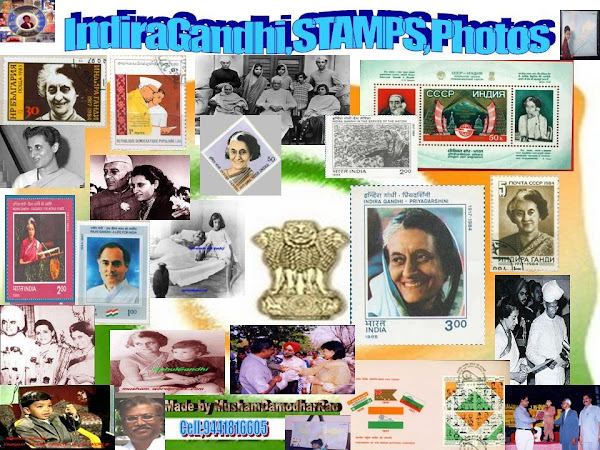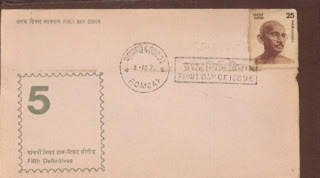RAJGHAT FDC,places of Delhi 15 FDC for SALE
Rajghat,is the place where Mahatma Gandhi was cremated. A memorial to the father of the nation,
Set in the midst of deep green lawns, Rajghat is the place where Mahatma Gandhi was cremated. A memorial to the
father of the nation, Rajghat is a simple square platform with a black memorial stone with “Hey Ram” inscribed on it.
“Hey Ram” were the last words uttered by the Mahatma before collapsing after being shot at.
Located on the west bank of the River Yamuna, Rajghat is surrounded by a wooded area and several exotic shrubs that
give the area a serene ambience. Walk along the ornate stone pathways as you relax on your tours to the samadhi of
one of the greatest leaders, statesman and humanist ever born.
India Travel Portal arranges for you to pay your respects at Rajghat and feel an indescribable peace as you approach
the resting place of one of the greatest proponents of non-violence.
Also tour the Gandhi Memorial Museum and the Gandhi Balidan Sthal as a part of your Rajghat tours with India Travel
Portal.
Delhi Forts are the sheer reminders of the glorious era of city’s successive dynasties. Visit the colossal Red Fort
and Old Fort two major attractions of the city capital.
Monumental heritage of Delhi is well preserved in its forts, palaces, temples and mosques. Visit the magnificent
Qutub Minar that holds lot of surprises in its colossal minaret.
India Gate is constructed as a memorial and was built in the memory of 90,00 soldiers who laid down their lives
during world war I. Located at Rajpath, India Gate is 42 m high and is popular relaxation area during the summer
evenings. India Gate also act as popular pinic spot during winter. Also known as the All India War Memorial, India
Gate was designed and constructed by Lutyens. He was the who is considered the chief proclaimer in designing the New
Delhi plans.
If it were not for the Montagu-Chelmsford reforms of 1919, the Parliament House may not have been built. It’s corny
how the building most indispensable to modern Indian democracy came up as an afterthought. Earlier called the
Circular House, it was added to the layout at a later stage following the reforms which created a large Legislative
Assembly.
This edifice is the brainchild of Herbert Baker and was much criticized in comparison with Lutyens creations. An
article by Robert Byron in Architectural Review, January 1931describes it thus: “The Council Chamber has been Sir
Herbert’s unhappiest venture. Its effect from a distance has been described. It resembles a Spanish bull-ring, lying
like a mill-wheel dropped accidentally on its side.”
The Viceroy Palace remains Lutyens most significant achievement. It is befittingly the crowning glory of the British
Empire and architecture in India. Today, it is perhaps India’s best known monument after the Taj Mahal and the Qutub
Minar. Bigger than the Palace of Versailles, it cost a whopping £12,53,000 and now houses the President of India. It
is unquestionably a masterpiece of symmetry, discipline, silhouette, colour and harmony. of course, it has come in
for much criticism too but that has mostly been limited to the imperial intent behind it rather than its
architecture.
The construction of Humayun’s tomb was taken up by the grief-stricken wife of Humayun, Hamida Banu, also known as
Bega Begam in 1565. Legend has it that the design of the Taj was inspired from this tomb’s. In pure architectural
sense, this building is probably superior and much more beautiful that the stunning Taj. Sacrilege? But really, the
only thing this building lacks is the showy marble.
Humayun- The Mughal Emperor Costructed The Fort
When the second Mughal emperor Humayun decided to make a city of his own he decided on the site of the ancient city
of Indraprastha. Humayun was quite a scholar with a fine grasp on such matters and so it is certain that the site was
chosen deliberately. When his Sher Shah Suri overthrew him, he destroyed most of Dinpanah (refuge of the faithful) as
the city of Humayun was called to make way for his own Dilli Sher Shahi or Shergarh. Incidentally, Humayun was
probably the only emperor in history who built a city in Delhi and did not give it his own name – this was typical of
Humayun’s rather sophisticated and dreamy character. The Layout of The Massive Colossal
Jantar Mantar
¤ An Observatory
The Jantar Mantar was built in 1710 by Raja Jai Singh II of Jaipur (1699-1743) in Delhi. This is an observatory
consisting of mason-built astronomical instruments to chart the course of the heavens. Jai Singh, who was a very
scholarly king with a very keen interest in astronomy and astrology, had other observatories built too – in Ujjain,
Jaipur, Mathura (which no longer survives) and Varanasi.
The first among these was this one in Delhi. The yantras (instruments, which has been distorted to Jantar) are built
of brick rubble and plastered with lime. The yantras have evocative names like, samrat yantra, jai prakash, ram
yantra and niyati chakra; each of which are used to for various astronomical calculations.
Qutub Minar in Delhi
¤ Constructed As A Holy Minar
Qutub MinarThe world famous towering Qutub Minar, started in 1192 by Qutub-ud-din Aibak (1192-98), breathes down the
neck of the Quwwat-ul-Islam mosque. There is a slight difference of opinion as to its purpose: it probably was a
tower of victory, but then again it could have been built to be a minar (tower), attached to the Quwwat-ul-Islam
mosque, for the muezzin (priest) to climb up top for a prayer.
¤ Other Belief of Its Construction
Among Delhites there are lots of other theories about the origin of the tower. Some say it was the observatory of the
great scientist Aryabhatta of ancient India, other claim that it was built by Prithvi Chauhan for his daughter to see
the Yamuna. In fact everything short of an extraterrestrial origin has been attributed to it. The presence of the
ancient non-rusting Iron Pillar within the complex further appears to add credence to the first theory. However the
tower, its entire design and architecture are undisputedly Islamic and all the other theories are just matters of
wild surmise.
Considering how shortchanged he was for time, it is doubtful that Qutub-ud-din got much further than a couple of
levels of the minar, in fact many suggest that lived to see only the first storey complete. Altamash, his successor,
completed the remaining tower.
¤ Measures Taken To Keep The Minar In Perfect Shape
It is clear that the tower was very close to the sultanate’s heart, since repeated efforts were made to keep it in
perfect shape. In its long career, the tower got hit by lightening twice – something that, of course, with its height
it was literally asking for. Once during the reign of Muhammad-bin-Tughlaq, who very decently repaired the ensuing
damage. The next time was in the indefatigable builder Feroze Shah Tughlaq’s time, when the topmost storey got
damaged. Feroze Shah, who of course couldn’t well leave things alone, not only repaired the floor, but also sneaked
in another level.
The Mecca of all the lovers, without places to go and extra money to spend in Delhi, is the beautiful and serene Lodi
Garden. Its original purpose was hardly that however. It was designed over two dynasties – the Sayyids and Lodis (15
-16 th century) – to be a sort of everyone-take-one graveyard for their families.
During the British times the garden went under the moniker of Lady Willingdon Park, all that stopped with the
Independence when they reverted back to being good old Lodi garden. In 1968, the gardens were spruced and
relandscaped by JA Stein and Garrett Eckbo. There are several tombs in this area. You can climb to the top of some of
them. However the steps are very steep and dark so it’s strictly not recommended. Apart from breaking your neck, you
might end up being bitten by a snake or something
The result of this combined effort is an interesting mix in styles that is clearly discernable all over the tower.
Each of the original three storeys has different designs. The base storey has alternate angular and circular flutings
while those of the second one are round and the third one has only angular flutings. Their alignment is mercifully
similar, so giving the tower a rhythmic harmony. The pretty projecting balconies have a very interesting pattern,
with icicle-shaped pendentive (an intricate design in which triangular pieces of vaulting spring from the corners of
a rectangular area and support a rounded or polygonal dome) type of brackets. The attractiveness of the balconies is
heightened by the bands of sonorous inscriptions. The diameter (at base) of the Qutub Minar is 14.32m and about 2.75m
at the top.
¤ The Attraction of Crownig Cupola
The tower had a crowning cupola on the top at one time, however this was struck down sometime in the early 19th
century, an earthquake felled it. This was replced by a well meaning English engineer Major Smith. However it must
have looked quite an eyesore for when Lord Hardinge was Governor-general of British India, he had it removed. You can
see it now on the spruce lawns of the Qutub complex. Come to think of it, it must have been eyesore – it’s called
Smith’s folly.



















































